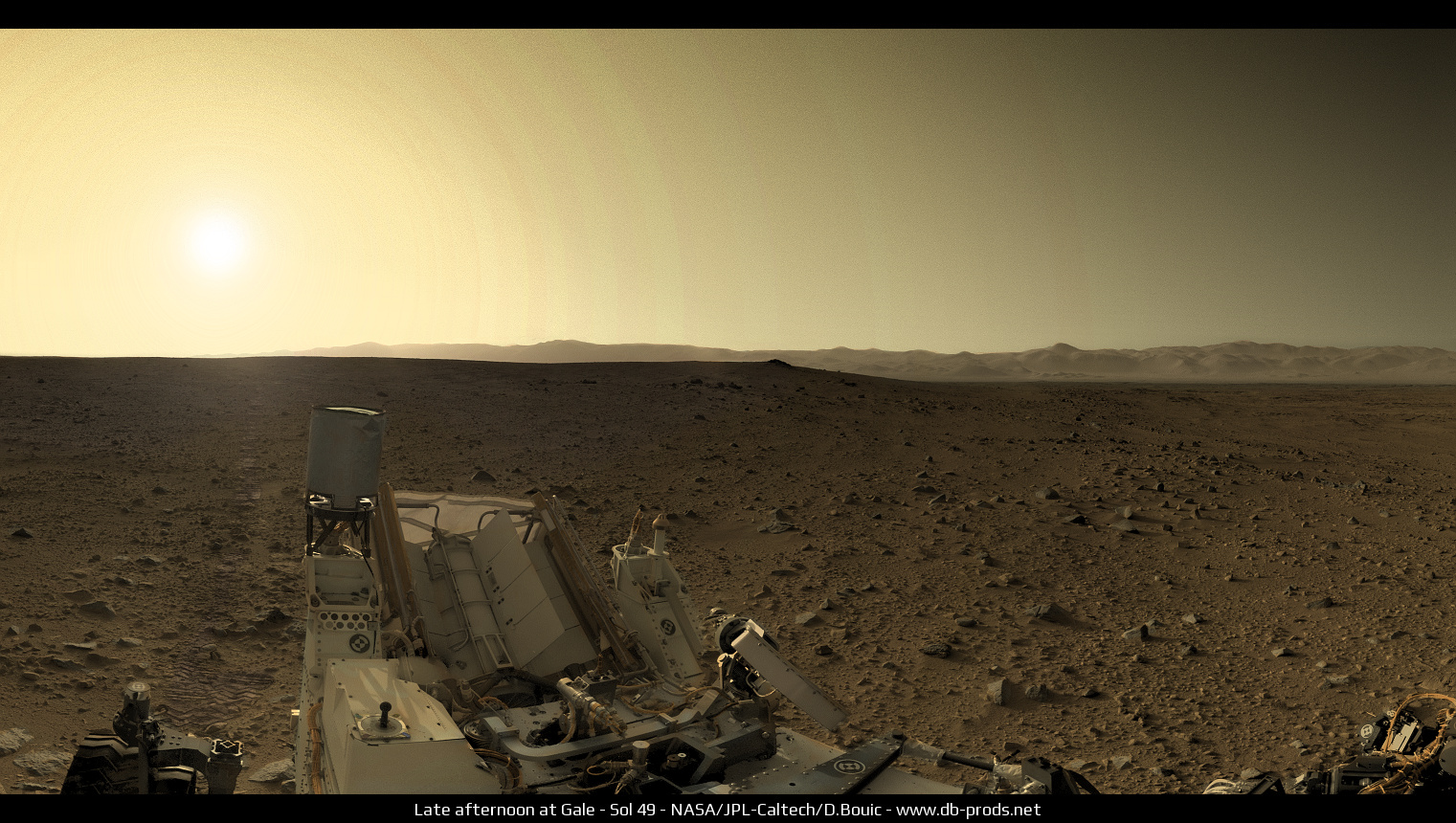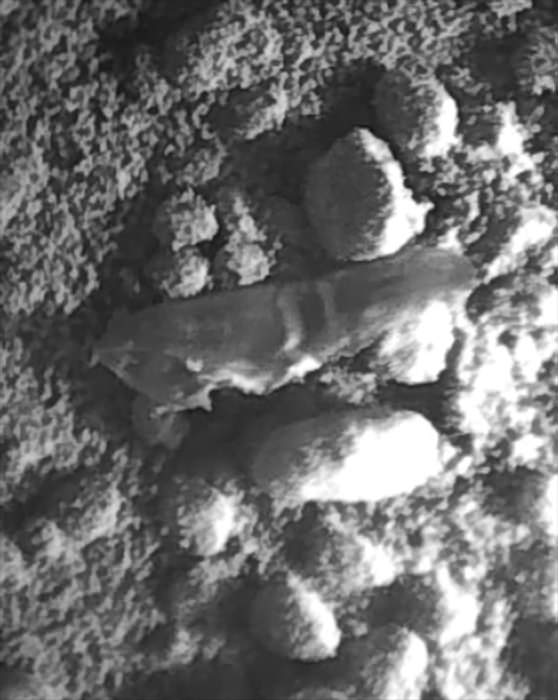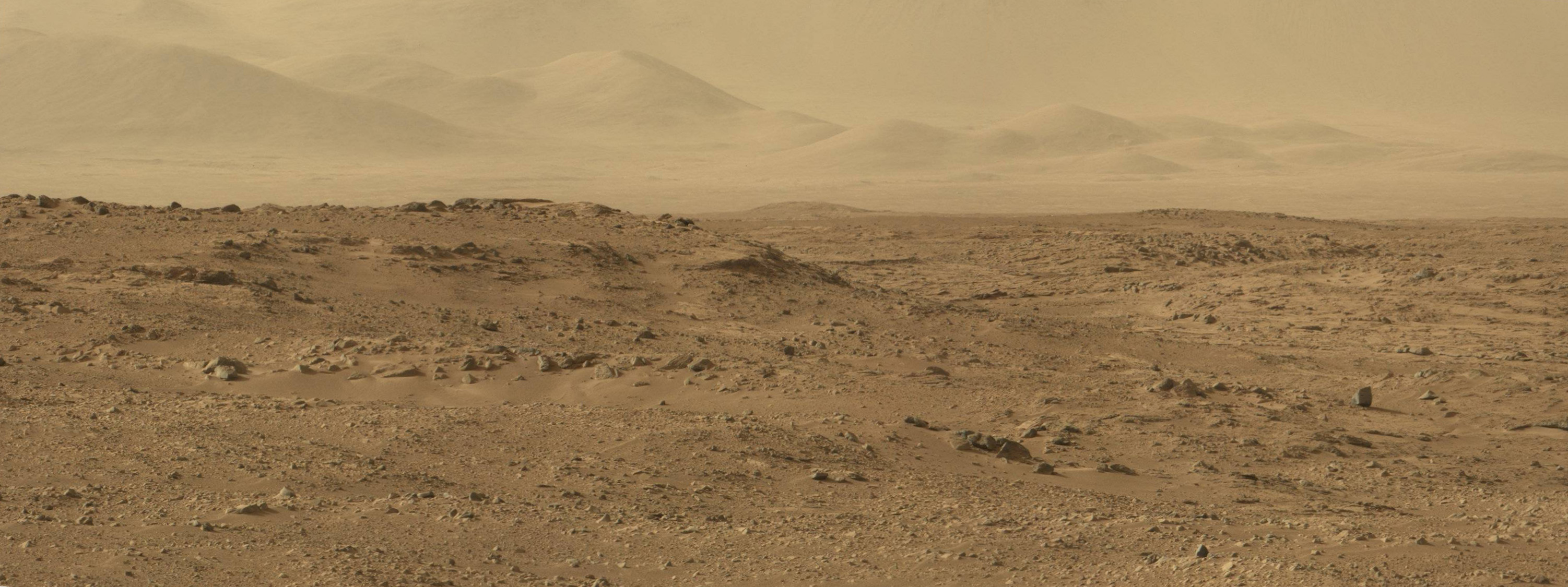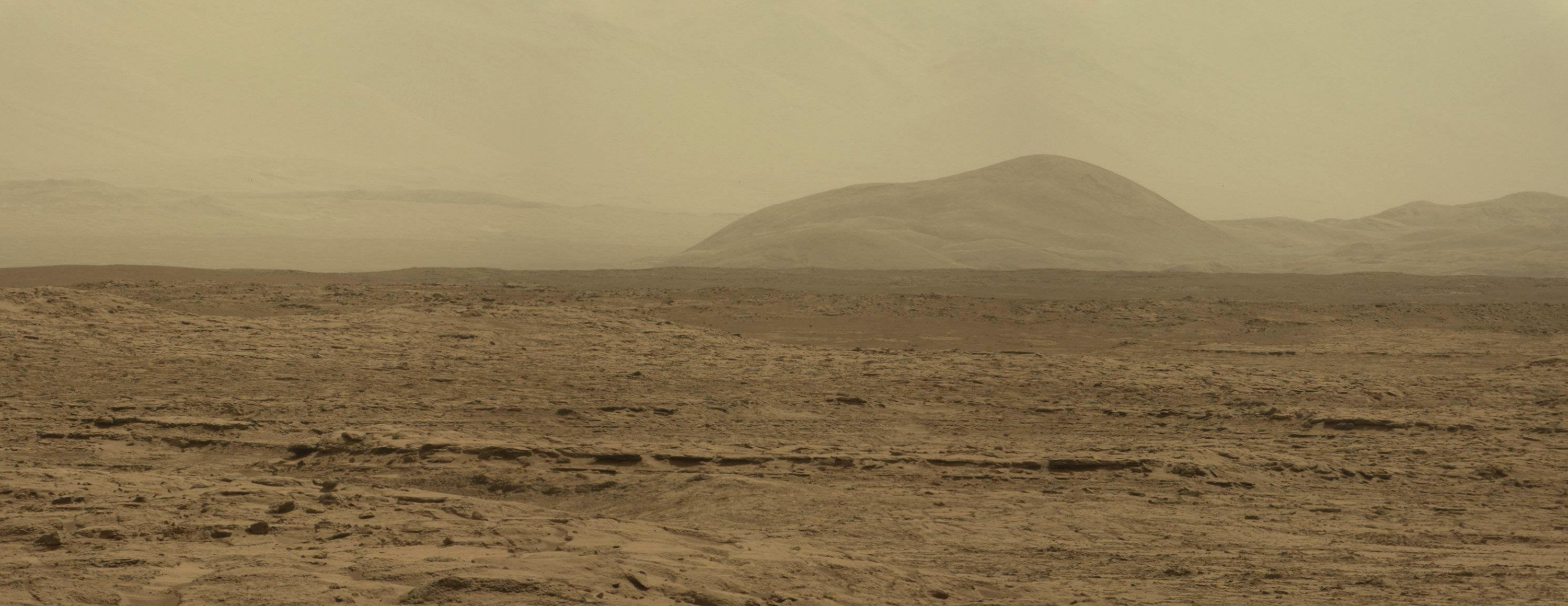NASA / NASA JPL:
Mars Soil Sample Delivered for Analysis Inside Rover
October 18, 2012
Mars Science Laboratory Mission Status Report
PASADENA, Calif. -- NASA's Mars rover Curiosity has ingested its first solid sample into an analytical instrument inside the rover, a capability at the core of the two-year mission.
The rover's Chemistry and Mineralogy (CheMin) instrument is analyzing this sample to determine what minerals it contains.
"We are crossing a significant threshold for this mission by using CheMin on its first sample," said Curiosity's project scientist, John Grotzinger of the California Institute of Technology in Pasadena. "This instrument gives us a more definitive mineral-identifying method than ever before used on Mars: X-ray diffraction. Confidently identifying minerals is important because minerals record the environmental conditions under which they form."
{colsp=3}
Click on images for details

|

|
 Three bite marks left in the Martian ground by the scoop on the robotic arm of NASA's Mars rover Curiosity are visible in this image taken by the rover's right Navigation Camera during the mission's 69th Martian day, or sol (Oct. 15, 2012).
Three bite marks left in the Martian ground by the scoop on the robotic arm of NASA's Mars rover Curiosity are visible in this image taken by the rover's right Navigation Camera during the mission's 69th Martian day, or sol (Oct. 15, 2012).Image credit: NASA/JPL-Caltech
|
The robotic arm on NASA's Mars rover Curiosity delivered a sample of Martian soil to the rover's observation tray for the first time during the mission's 70th Martian day, or sol (Oct. 16, 2012).Image credit: NASA/JPL-Caltech/MSSS
|
This image shows part of the small pit or bite created when NASA's Mars rover Curiosity collected its second scoop of Martian soil at a sandy patch called "Rocknest."Image credit: NASA/JPL-Caltech/MSSS
The sample is a sieved portion -- about as much material as in a baby aspirin -- from the third scoop collected by Curiosity as a windblown patch of dusty sand called "Rocknest." The rover's robotic arm delivered the sample to CheMin's opened inlet funnel on the rover's deck on Oct. 17.
The previous day, the rover shook the scooped material inside sample-processing chambers to scrub internal surfaces of any residue carried from Earth. One earlier scoopful was also used for cleaning. Additional repetitions of this cleaning method will be used before delivery of a future sample to the rover's other internal analytic instrument, the Sample Analysis at Mars investigation, which studies samples' chemistry.
Various small bits of light-toned material on the ground at Rocknest have affected the rover's activities in the past several days. One piece about half an inch (1.3 centimeters) long was noticed on Oct. 7. The rover team postponed use of the robotic arm for two days while investigating this object, and assessed it to be debris from the spacecraft.
Images taken after Curiosity collected its second scoop of Rocknest material on Oct. 12 showed smaller bits of light-toned material in the hole dug by the scooping action. This led to discarding that scoopful rather than using it to scrub the processing mechanisms. Scientists assess these smaller, bright particles to be native Martian material, not from the spacecraft.
"We plan to learn more both about the spacecraft material and about the smaller, bright particles," said Curiosity Project Manager Richard Cook of NASA's Jet Propulsion Laboratory, Pasadena. "We will finish determining whether the spacecraft material warrants concern during future operations. The native Mars particles become fodder for the mission's scientific studies."
{...}
CBS News Space:
Rover begins soil analysis; scientists ponder bright fragment
Universe Today:
New ‘Shiny’ Objects Found by Curiosity Rover Are Likely Indigenous
SPACE.com:
Yum! Curiosity Rover Swallows 1st Mars Sample, Finds Odd Bright Stuff
Discovery News:
Yum! Curiosity Eats Mars Dirt
Florida Today:



 |
|
 |
|

 |
|
 |
|

 |
|
 |
|




 |
|
 This image contributed to an interpretation by NASA's Mars rover Curiosity science team that some of the bright particles on the ground near the rover are native Martian material. Other light-toned material nearby (see PIA16230) has been assessed as small debris from the spacecraft.
This image contributed to an interpretation by NASA's Mars rover Curiosity science team that some of the bright particles on the ground near the rover are native Martian material. Other light-toned material nearby (see PIA16230) has been assessed as small debris from the spacecraft. |
|
 |
|
 Three bite marks left in the Martian ground by the scoop on the robotic arm of NASA's Mars rover Curiosity are visible in this image taken by the rover's right Navigation Camera during the mission's 69th Martian day, or sol (Oct. 15, 2012).
Three bite marks left in the Martian ground by the scoop on the robotic arm of NASA's Mars rover Curiosity are visible in this image taken by the rover's right Navigation Camera during the mission's 69th Martian day, or sol (Oct. 15, 2012). The Chemistry and Camera (ChemCam) instrument on NASA's Mars rover Curiosity used its laser and spectrometers to examine what chemical elements are in a drift of Martian sand during the mission's 74th Martian day, or sol (Oct. 20, 2012).
The Chemistry and Camera (ChemCam) instrument on NASA's Mars rover Curiosity used its laser and spectrometers to examine what chemical elements are in a drift of Martian sand during the mission's 74th Martian day, or sol (Oct. 20, 2012).